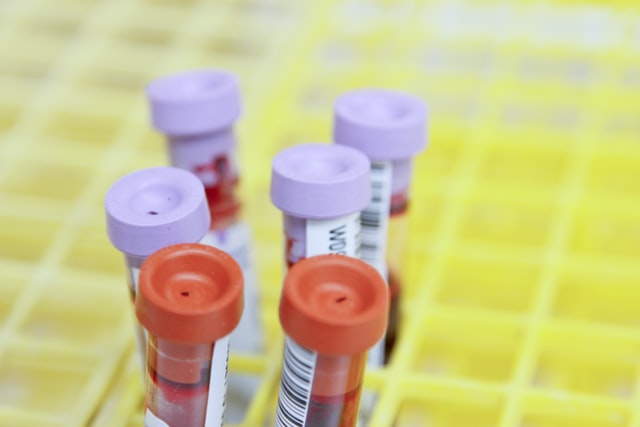Promised Cures, Tainted Cells: How Cord Blood Banks Mislead Parents
By Sarah Kliff and Azeen Ghorayshi,
The New York Times
| 07. 15. 2024
image "Blood Samples" by Daniel Sone from the website of the National Cancer Institute
Millions of pregnant women get the pitch through their OB-GYN: Put a bit of your newborn’s umbilical cord on ice, as a biological insurance policy. If your child one day faces cancer, diabetes or even autism, the precious stem cells in the cord blood could become a tailor-made cure.
Many families are happy to pay for the assurance of a healthy future. More than two million umbilical cord samples sit in a handful of suburban warehouses across the country. It’s a lucrative business, with companies charging several thousand dollars upfront plus hundreds more every year thereafter. The industry has grown rapidly, bolstered by investments from medical device companies, hospital partnerships and endorsements from celebrities like Drew Barrymore and Chrissy Teigen.
But the leading banks have consistently misled customers and doctors about the technology’s promise, an investigation by The New York Times found. Doctors rarely use cord blood anymore, thanks to advances that have made it easier to transplant adult stem cells. And the few parents who try...
Related Articles
By Jenny Lange, BioNews | 12.01.2025
A UK toddler with a rare genetic condition was the first person to receive a new gene therapy that appears to halt disease progression.
Oliver, now three years old, has Hunter syndrome, an inherited genetic disorder that leads to physical...
By Rachel Hall, The Guardian | 11.20.2025
Couples are needlessly going through IVF because male infertility is under-researched, with the NHS too often failing to diagnose treatable causes, leading experts have said.
Poor understanding among GPs and a lack of specialists and NHS testing means male infertility...
By Pam Belluck and Carl Zimmer, The New York Times | 11.19.2025
Gene-editing therapies offer great hope for treating rare diseases, but they face big hurdles: the tremendous time and resources involved in devising a treatment that might only apply to a small number of patients.
A study published on Wednesday...
By Aisha Down, The Guardian | 11.10.2025
It has been an excellent year for neurotech, if you ignore the people funding it. In August, a tiny brain implant successfully decoded the inner speech of paralysis patients. In October, an eye implant restored sight to patients who had...




